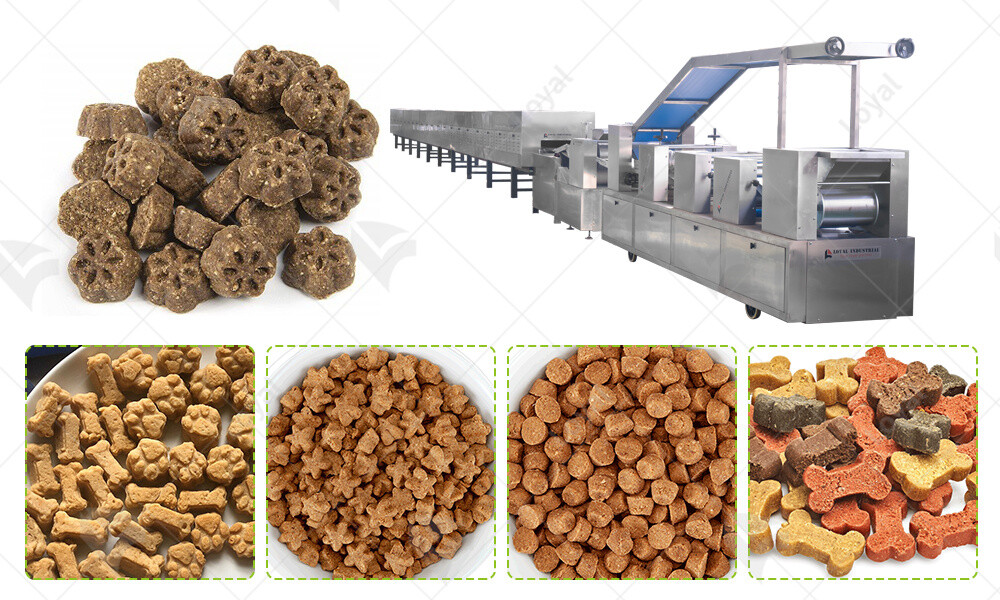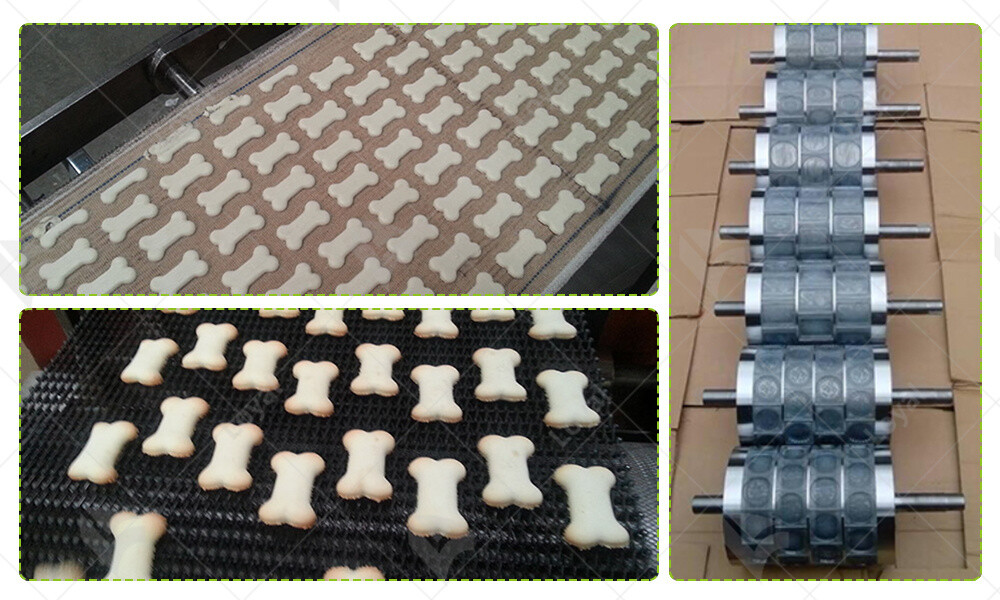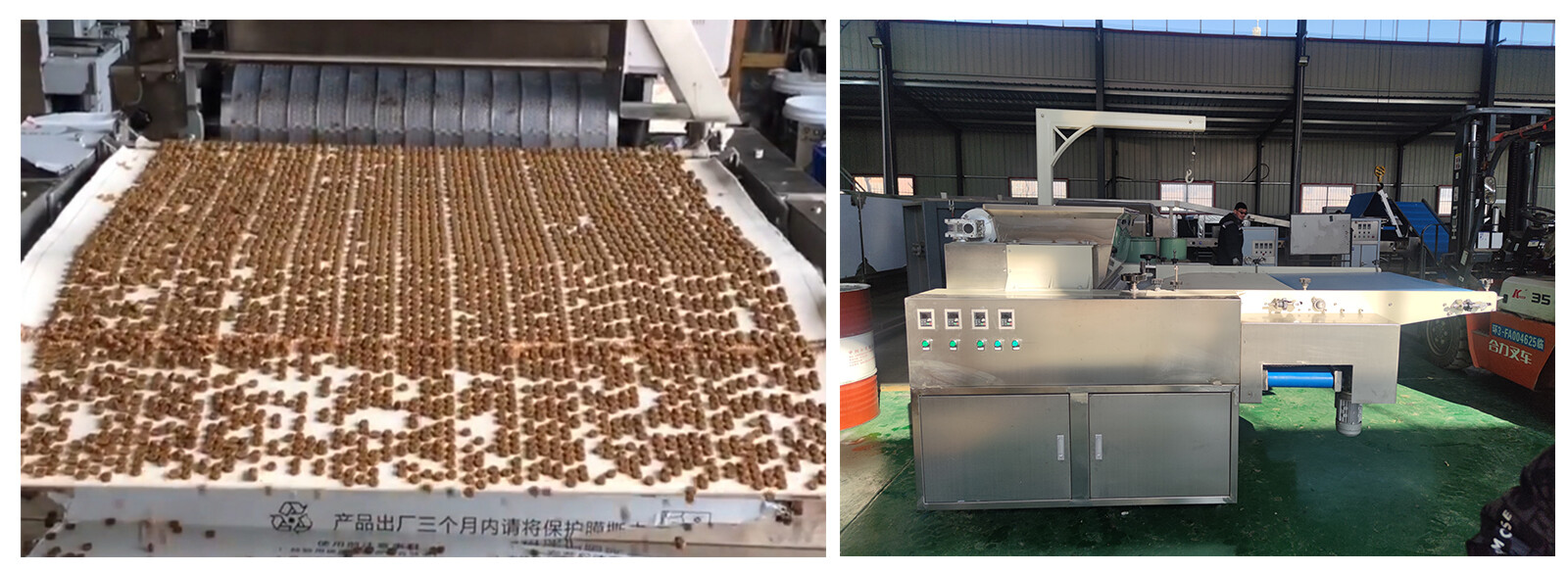Everything you Need to Know About Dog Food Machine
Understanding Dog Food Machinery Trends
In recent years, the dog food industry has seen a significant shift towards automation and innovation in machinery. Manufacturers are constantly striving to enhance efficiency, improve product quality, and meet the evolving demands of pet owners. One prominent trend in dog food machinery is the integration of smart technologies, such as AI and IoT, to streamline production processes and ensure consistency in product quality. These advancements allow manufacturers to monitor and control various parameters in real-time, resulting in greater precision and reliability.
Moreover, sustainability has emerged as a key focus in dog food machinery trends. Manufacturers are investing in eco-friendly equipment and implementing energy-efficient practices to minimize environmental impact. From reducing water consumption during production to utilizing recyclable materials in packaging, sustainability is driving innovation in the design and operation of dog food machines. Additionally, there is a growing demand for modular and customizable machinery that can adapt to changing production needs and accommodate a wide range of recipes and formulations.

Key Components for Optimal Dog Food Production
When it comes to producing high-quality dog food, several key components play a crucial role in ensuring optimal results. One of the primary components is the extruder, which forms the heart of the dog food machine. Extruders are responsible for cooking and shaping the raw ingredients into the desired kibble or pellet form. Advanced extrusion technology allows for precise control over temperature, pressure, and moisture levels, resulting in consistent product texture and nutritional content.
Another essential component is the mixer, which blends together the various ingredients to create a homogeneous mixture. Mixers come in a variety of designs, including ribbon, paddle, and vertical mixers, each suited to different production requirements. Proper mixing is essential for achieving uniform distribution of nutrients and flavors throughout the dog food formulation.
In addition to extruders and mixers, other key components include the dryer, which removes excess moisture from the product to extend shelf life, and the coating system, which adds flavorings, vitamins, and coatings to enhance palatability and nutritional value. Quality control systems, such as metal detectors and weight checkers, are also integral to ensuring product safety and consistency.
Overall, the integration of these key components in dog food production machinery is essential for achieving optimal results in terms of product quality, efficiency, and compliance with industry standards. Manufacturers must carefully select and maintain each component to ensure smooth operation and consistent output.

Selecting the Right Dog Food Processing Equipment
When selecting the right dog food processing equipment, it's crucial to compare different options to ensure you're investing in machinery that meets your production needs. Let's compare LOYAL company's machines with NP company's machines across five key aspects:
Aspect | LOYAL Company | NP Company |
Production Capacity | Higher capacity models | Limited capacity options |
Technology Integration | Advanced technology | Basic functionality |
Customization Options | Tailored solutions | Limited customization |
Durability | Robust build quality | Moderate durability |
Maintenance and Support | Comprehensive support | Limited maintenance help |
LOYAL company's machines typically offer higher production capacities, integrating advanced technology for optimized performance. They also provide extensive customization options, allowing you to tailor the equipment to your specific requirements. With a focus on durability, LOYAL machines are built to withstand rigorous production environments, ensuring longevity and reliability.
On the other hand, NP company's machines may offer more basic functionality, with limited customization options and lower production capacities. While they may be suitable for smaller-scale operations, they may lack the durability and comprehensive support provided by LOYAL company's equipment.
In summary, when choosing between LOYAL and NP company's machines, consider factors such as production capacity, technology integration, customization options, durability, and maintenance support to select the right dog food processing equipment for your needs.
Enhancing Efficiency in Dog Food Manufacturing
Efficiency in dog food manufacturing is paramount for ensuring timely production and maintaining high-quality standards. Several strategies can be employed to enhance efficiency in this process.
Firstly, investing in modern dog food machines can significantly improve efficiency. Advanced machinery, such as automated mixing and packaging systems, can streamline production processes, reduce manual labor, and minimize errors. These machines are equipped with sensors and controls that optimize ingredient mixing, portioning, and packaging, resulting in consistent product quality and reduced waste.
Secondly, optimizing workflow and layout within the manufacturing facility can enhance efficiency. By strategically organizing workstations and material flows, manufacturers can minimize downtime, reduce material handling, and improve overall productivity. This may involve implementing lean manufacturing principles, such as 5S methodology, to eliminate waste and create a more efficient work environment.
Additionally, incorporating data analytics and software solutions can further enhance efficiency in dog food manufacturing. By collecting and analyzing data related to production processes, equipment performance, and product quality, manufacturers can identify areas for improvement and make data-driven decisions to optimize operations. Real-time monitoring systems can also provide valuable insights into machine status and performance, enabling proactive maintenance and minimizing unplanned downtime.
Overall, enhancing efficiency in dog food manufacturing requires a combination of advanced machinery, optimized workflow, and data-driven decision-making. By adopting these strategies, manufacturers can streamline production processes, reduce costs, and meet the growing demand for high-quality pet food products.

Advanced Technologies in Dog Food Machinery
Advanced technologies are revolutionizing the dog food manufacturing industry, offering innovative solutions to improve product quality, increase efficiency, and meet evolving consumer demands.
One of the most significant advancements in dog food machinery is the integration of artificial intelligence (AI) and machine learning algorithms. These technologies enable machines to learn from data, optimize production processes, and adapt to changing conditions in real-time. For example, AI-powered sorting and inspection systems can accurately identify and remove defective products, ensuring consistent quality standards and reducing waste.
Another key technology in dog food machinery is robotics. Automated robotic systems can perform various tasks, such as ingredient handling, mixing, and packaging, with precision and efficiency. By replacing manual labor with robots, manufacturers can increase production speed, reduce labor costs, and improve workplace safety.
Advancements in sensor technology are enhancing the monitoring and control capabilities of dog food machines. Sensors embedded in processing equipment can measure various parameters, such as temperature, moisture, and pressure, allowing for precise control of production processes and ensuring product consistency.
The Internet of Things (IoT) is enabling remote monitoring and management of dog food machinery. IoT-connected devices collect and transmit data to centralized control systems, allowing manufacturers to monitor machine performance, diagnose issues, and implement predictive maintenance strategies to prevent downtime.
Advanced technologies such as AI, robotics, sensors, and IoT are transforming the dog food manufacturing industry, offering unprecedented opportunities to improve efficiency, quality, and competitiveness. By embracing these technologies, manufacturers can stay ahead of the curve and meet the demands of today's pet owners for safe, nutritious, and convenient pet food products.

Ensuring Safety Standards in Dog Food Production
Ensuring safety standards in dog food production is paramount to safeguarding both the health of pets and the reputation of the manufacturer. Dog food machines play a crucial role in this process, as they are responsible for handling raw materials, processing, and packaging the final product.
Firstly, the design and construction of dog food machines should adhere to strict safety regulations and industry standards. This includes implementing safety features such as emergency stop buttons, protective guards, and fail-safe mechanisms to prevent accidents during operation.
Furthermore, employee training is crucial to promote awareness of safety protocols and proper operating procedures among personnel involved in dog food production. Training programs should cover topics such as equipment operation, maintenance protocols, handling of hazardous materials, and emergency response procedures to minimize the likelihood of accidents or injuries.
Lastly, maintaining a clean and hygienic production environment is imperative to prevent contamination and ensure the safety of the final product. Dog food machines should be cleaned and sanitized regularly to remove any residues or bacteria that could compromise the quality and safety of the food.

Sustainable Practices in Dog Food Machine Operations
In recent years, there has been a growing emphasis on sustainability in food production, including the operation of dog food machines. Adopting sustainable practices not only benefits the environment but also enhances efficiency and reduces costs in the long run.
Firstly, optimizing energy usage is essential to minimize environmental impact and reduce operating costs. Dog food machines should be equipped with energy-efficient components and technologies, such as variable frequency drives, LED lighting, and heat recovery systems, to conserve energy and lower carbon emissions.
Adopting eco-friendly materials and packaging solutions can help mitigate the environmental footprint of dog food production. Manufacturers should explore alternative packaging materials, such as biodegradable or recyclable materials, to minimize plastic waste and promote sustainable consumption practices among consumers.
Moreover, implementing water conservation measures can help reduce water consumption and minimize the strain on natural water resources. Dog food machines should be designed with water-saving features, such as efficient cooling systems and recirculation loops, to minimize water usage during production processes like mixing, cooking, and cleaning.
By integrating sustainable practices into dog food machine operations, manufacturers can reduce their environmental impact, improve operational efficiency, and meet the growing demand for eco-friendly products among environmentally-conscious consumers.

Customization Options for Dog Food Processing Equipment
Firstly, equipment size and capacity can be customized to accommodate different production volumes and processing requirements. Manufacturers can choose from a variety of machine sizes and configurations, ranging from small-scale batch processing equipment to large-scale continuous production lines, to suit their production needs.
Secondly, equipment functionality and features can be customized to streamline specific production processes and enhance efficiency. For example, manufacturers can integrate additional features such as automatic feeding systems, variable speed controls, and recipe management software to optimize performance and minimize downtime.
Furthermore, material compatibility and handling options can be customized to accommodate a wide range of raw materials and ingredients used in dog food production. Equipment components such as mixing chambers, extrusion dies, and packaging units can be designed to handle different types of ingredients, textures, and formulations with ease.
By offering customizable options for dog food processing equipment, manufacturers can provide tailored solutions that meet the unique needs and requirements of their customers, while maintaining flexibility and adaptability in a dynamic market environment.

Maintenance and Troubleshooting of Dog Food Machines
Maintaining and troubleshooting dog food machines is essential to ensure continuous and efficient production in the pet food industry. Regular maintenance helps prevent breakdowns and prolongs the lifespan of the equipment, while effective troubleshooting minimizes downtime and maximizes productivity.
Firstly, regular maintenance routines should be established for dog food machines to keep them operating smoothly. This includes tasks such as cleaning, lubricating moving parts, inspecting for wear and tear, and replacing worn components. Scheduled maintenance should be performed according to the manufacturer's recommendations to address specific needs of each machine.
Secondly, troubleshooting procedures are crucial for quickly identifying and resolving issues that may arise during operation. This involves systematic diagnosis of problems, such as abnormal noises, fluctuations in output, or mechanical failures. By following troubleshooting protocols provided by the manufacturer, operators can efficiently pinpoint the root cause of problems and implement appropriate solutions.
Furthermore, proper training of staff is essential for effective maintenance and troubleshooting of dog food machines. Operators should be familiarized with equipment operation, maintenance protocols, and troubleshooting techniques to handle routine tasks and address unforeseen issues competently. Additionally, having access to technical support from equipment manufacturers or specialized service providers can expedite problem resolution and ensure optimal performance of the machines.
By implementing proactive maintenance routines, conducting systematic troubleshooting procedures, and providing adequate training to personnel, pet food manufacturers can minimize downtime, reduce costs, and optimize production efficiency.

Future Prospects and Innovations in Dog Food Machinery
The future of dog food machinery holds promising advancements driven by technological innovation and evolving consumer preferences. As pet owners increasingly prioritize health, nutrition, and sustainability, manufacturers are exploring innovative solutions to meet these demands while enhancing production efficiency and product quality.
One significant trend shaping the future of dog food machinery is the integration of smart technology and automation. Smart sensors, data analytics, and artificial intelligence are being incorporated into machines to monitor production parameters, optimize processes, and ensure consistency in product quality. Automation not only streamlines production but also reduces the risk of human error and enhances traceability throughout the manufacturing process.
Another area of innovation in dog food machinery is the development of sustainable and eco-friendly solutions. This includes advancements in packaging materials, energy-efficient equipment, and waste reduction strategies. Manufacturers are exploring renewable resources, biodegradable packaging, and circular economy principles to minimize environmental impact while meeting the nutritional needs of pets.
Furthermore, customization and personalization are becoming increasingly important in the pet food industry, driving innovation in machinery design and functionality. Modular systems, flexible production lines, and customizable recipes enable manufacturers to cater to individual pet dietary requirements and preferences, offering a wide range of options to pet owners.
In conclusion, the future of dog food machinery is characterized by technological innovation, sustainability, and customization. By embracing smart technology, sustainable practices, and personalized solutions, manufacturers can adapt to evolving market trends, meet consumer expectations, and drive growth in the pet food industry.
References
1. Food Engineering Magazine
Website: [https://www.foodengineeringmag.com/]
2. Food Processing Magazine
Website: [https://www.foodprocessing.com/]
3. Institute of Food Technologists (IFT)
Website: [https://www.ift.org/]
4. American Society of Agricultural and Biological Engineers (ASABE)
Website: [https://www.asabe.org/]
5. European Federation of Food Science and Technology (EFFoST)
Website: [https://effost.org/]

FAQs: Common Questions aboutDog Food Machine
1. What types of dog food can be produced using a dog food machine?
Dog food machines can produce various types of dog food, including dry kibble, semi-moist, and canned food.
2. How often should I perform maintenance on a dog food machine?
Maintenance schedules may vary depending on usage and manufacturer recommendations, but generally, regular maintenance should be performed at least once a month to ensure optimal performance.
3. Can dog food machines accommodate different ingredients and recipes?
Yes, many dog food machines offer flexibility to accommodate different ingredients and recipes, allowing manufacturers to produce a wide range of pet food products.
4. What safety precautions should be taken when operating a dog food machine?
Operators should follow all safety guidelines provided by the manufacturer, including wearing appropriate protective gear, avoiding loose clothing near moving parts, and ensuring the machine is properly shut down and secured before maintenance or cleaning.












